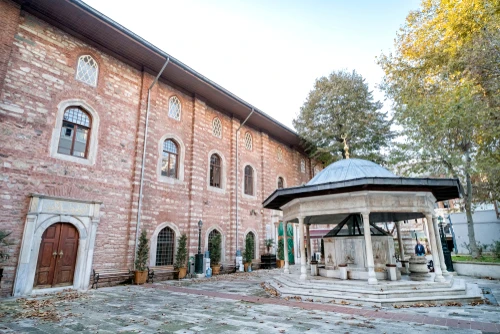
Arab Mosque in Istanbul
Discover the Arab Mosque, the first mosque built in Istanbul, and enjoy the beauty of Andalusian architecture. A captivating historical journey in the city of the Sultan.
The Arab Mosque in Istanbul is a magnificent architectural gem and a significant historical symbol that tells the tales of Arab and Islamic civilization in this ancient city. The mosque's unique design blends Byzantine and Andalusian styles, creating a stunning artistic masterpiece. It is a major tourist destination for visitors from all over the world, offering a unique opportunity to learn about the city's rich history and culture.
History of the Arab Mosque
The Arab Mosque was built in 717 AD by an Islamic army that came to Istanbul, then known as Constantinople, with the aim of conquering and liberating it from the Byzantines. It became one of the first mosques built in this city, which is rich in ancient civilizations and historical landmarks from various origins and periods.
Construction of the Arab Mosque
The army, led by Maslama ibn Abd al-Malik and a number of Arab commanders, along with some descendants of the Prophet’s companions, besieged the Byzantines for nearly a year, both by land and sea. Although they were unable to conquer Constantinople, they took control of the Galata district. As a result, an agreement was reached between the Islamic army and the Byzantine Emperor Leo, allowing the construction of a mosque in the area controlled by the Islamic army for Muslim worship. The Muslims used the Arab Mosque for about seven years until the army returned to the Levant.
Conversion into a Church
After the Islamic army left, the mosque was converted into a church and became known as "San Paolo."
Restoration as a Mosque
In 1453 AD, Sultan Mehmed the Conqueror restored the Arab Mosque to its original function as a mosque after it had been turned into a Dominican church. The mosque was renovated, and significant modifications were made, including the construction of a new pulpit.
Why is it Called the Arab Mosque?
The mosque earned the name "Arab Mosque" due to the settlement of Arabs, specifically the Banu al-Ahmar, in the area around the mosque in ancient times. These Arabs came to Istanbul from Andalusia after the fall of the Nasrid dynasty. Over time, the place adopted their name. This might be the reason behind the legend that claims Arab Muslims established the mosque before the conquest of Istanbul.
Architecture and Design of the Arab Mosque
The structure of the Arab Mosque is designed in the Andalusian Gothic style, with a rectangular shape supported by 22 wooden columns. The mosque has a single minaret and consists of three floors. The pulpit is made of marble, and the walls are composed of various materials such as brick and stone. The mosque also features unique Islamic decorations and retains some church-like interior elements, such as stained glass windows. The minaret is notable for its resemblance to the Umayyad Mosque’s minaret in Damascus, which was built around the same time as this mosque.
Where is the Arab Mosque Located and How to Get There?
The Arab Mosque is located near the famous Galata Tower and is easily accessible. Visitors can take the Hacı Osman Metro, get off at Haliç Station, and walk for 10 minutes, or they can take the Kabataş Tram and get off at Karaköy, followed by a 10-minute walk.









